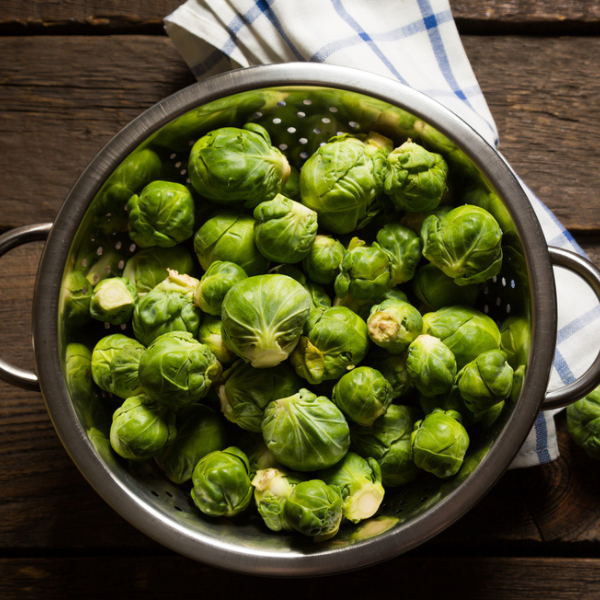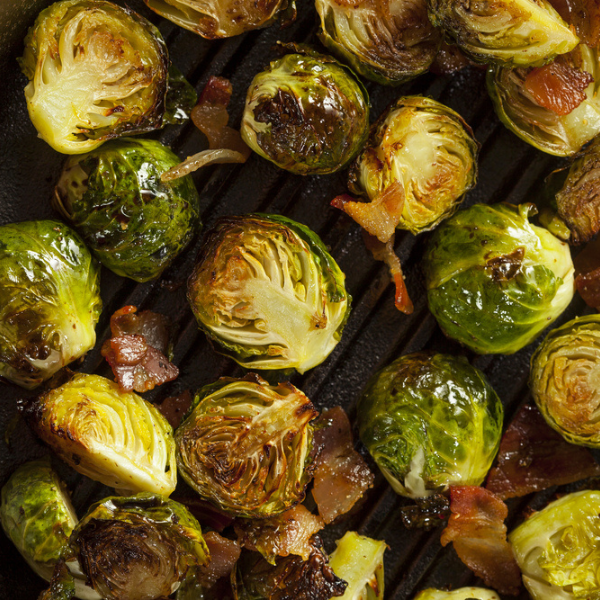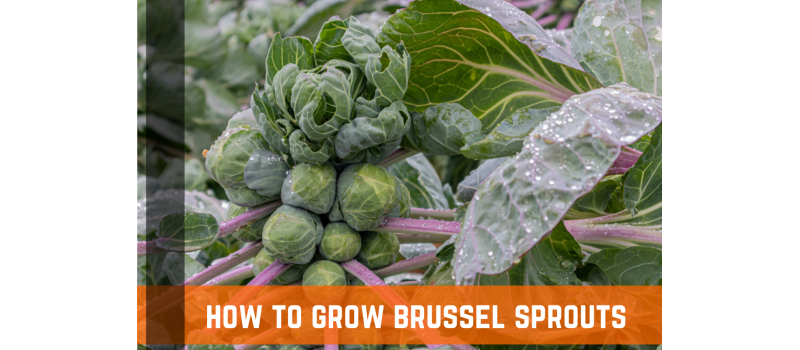Brussels sprouts may very well have origins in Rome, but then they also gained popularity in 16th-century Belgium. Brussels sprouts were named there. French settlers introduced Brussels sprouts into Louisiana circa 1800; commercial production began in 1925.
As the frozen food industry grew in the 1940s, Brussels sprout production relocated to California's central coast. The adorable buds, which resemble miniature cabbages, are loved for their flavor and flexibility. Fresh, light, and crisp in a salad when sliced thin. Almost coal-colored, they're delicate, sweet, and earthy. It is no wonder why any home gardener would want to introduce this to their own gardens.
Brussel Sprout Optimal Growing Conditions
Brussels sprouts can be grown in two ways: by planting seeds or by purchasing transplants. They thrive in both directions. While seeds are more cost-effective, you do lose some growing season time while you await for seeds to undergo germination and development. Brussels sprouts, like the majority of vegetables, require a least six hours of sunlight each day; more is preferable.
They prefer soils that are rich in organic matter and are moist, well-drained, and productive. For best growth and to prevent clubroot disease, the soil pH needs to be on the upper side of the normal range for vegetables, around 6.8. Test the soil to determine the pH for sure. More boron is also required for Brussels sprouts than for most other vegetables. Without the plant nutrient boron, which is used in minute amounts by all plants, Brussels sprouts grow hollow stems and tiny buds.
If your plants exhibit any of these signs, you may add boron to the soil by combining 1 tbsp of borax with 5 quarts of water, then evenly scattering the solution over a 50 square foot area of the bed. RESIST the want to add more ingredients because doing so can lead to issues.
Additionally, wait to apply until your plants have manifested the aforementioned deficiency symptoms. In a row or bed, Brussels sprouts should be spaced roughly 18 to 24 inches apart since they grow large. Rows should be 30 inches apart if they are planted in rows so you have room to move about. Don't let seedlings remain idle for an extended period of time, dry out, or become stunted in their group. Plant immediately.

How To Grow Brussel Sprouts
A moderate frost enhances the flavor of Brussels sprouts, which need a growth cycle of at least 80 days. Plant seeds generally four months before the anticipated earliest fall frost date in your location. For regions with cold winters, that most usually means inside the early to mid-summer, giving you a harvest in the fall or early winter.
You might also plant in the middle to late summer in regions with moderate winters in order to harvest in the middle to late winter. Select a location with ample sunlight and precise soil drainage. Because it can better endure temperature changes, an elevated garden bed is perfect. Another choice is container growing. Strawberries can stunt the growth of Brussels sprouts, so keep them far away from strawberry plants.
In the same way, avoid planting Brussels sprouts close to plants in the nightshade family, including tomatoes, as the sprouts may stunt their growth. Plant seeds about three inches apart and half an inch deep. When seedlings are about 6 inches tall, they should be trimmed to a distance of eighteen to twenty-four inches. It is preferable to add support stakes at the planting stage if necessary to avoid the plants from falling over when the sprouts grow.

Care & Maintenance
The optimum conditions for Brussels sprouts are full sun, which is defined as a minimum of at least six hours of direct sun on most days. The sprouts' maturity will be slowed by excessive shade. Brussels sprouts prefer an organically rich, loamy soil that is well drained. It's best to incorporate a substantial amount of compost into the soil before planting. The pH of the soil should be close to neutral.
Keep the soil in the sprouts wet but not drenched. A weekly amount of between one and one-half inches of water should be adequate. Poor sprout development can be caused by inconsistent watering. Mulch can assist the soil hold onto moisture and maintain the cool roots.
Brussels sprouts can endure brief periods of below-freezing weather, but they favor conditions between 45 and 80 ℉. As long as the plants' needs for soil moisture are met and there is adequate airflow around them, humidity is often not a problem.
Once the seedlings are about 6 inches tall, begin using a natural vegetable fertilizer with a high nitrogen content. Throughout the growth season, reapply as directed on the label. In their second growth season, Brussels sprouts bloom and set seed. Additionally, they don't reach this flowering stage because the majority of people plant them as annuals. Their pollination is assisted by insects and the breeze.
Harvesting Brussel Sprouts
For several weeks, sprouts begin to emerge at the bottom of the stem and work their way up. Harvestable brussels sprouts have firm, green, 1–2 inch-diameter heads that are ready to be picked. Sprouts can be taken out by rotating them until they separate from the plant.
Yellowing leaves can be removed along with lower sprouts as the plant continues to rise upward and produce additional leaves and sprouts. The plant can be harvested up until a harsh freeze because it can withstand frost. Sprouts of the highest caliber are generated during direct sunlight with nighttime light frosts. By removing the plant's top approximately three weeks prior to harvest, you can deceive the sprouts into developing all at once as winter approaches.
A good, full-sized plant can produce between two and three pounds of sprouts. They arrive swiftly at first, but as the temperature drops, they will become less frequent. When a sprout is harvested, no other sprouts will grow there. For gardeners in the South, full-grown sprouts make a fantastic winter harvest item because they maintain well on the plants in cold climates (planted in fall).
Gardeners who live in cold areas frequently bury Brussels sprout plants up to their crowns in hay or leaves in the late fall, then harvest the tiny sprouts as needed throughout the winter. Fresh, unwashed sprouts should be refrigerated in plastic bags. However, as fresh sprouts are the best tasting, aim to keep refrigeration to no more than a couple of days. Don't throw the leaves, either! They taste good when prepared similarly to collard greens.

Common Pests & Diseases
The same issues that plague different plants inside the cabbage family also affect Brussels sprouts. The cabbage loopers, cabbageworms, cabbage root maggots, and aphids are the most prevalent pests. To protect your plants, take into account employing row covers.
Brussels sprouts may also be afflicted by a number of fungi, including as white mold, downy mildew, clubroot, and black rot. A sufficient airflow around the crops can aid in preventing fungus problems. In most cases, it's advisable to get rid of unhealthy plants.

